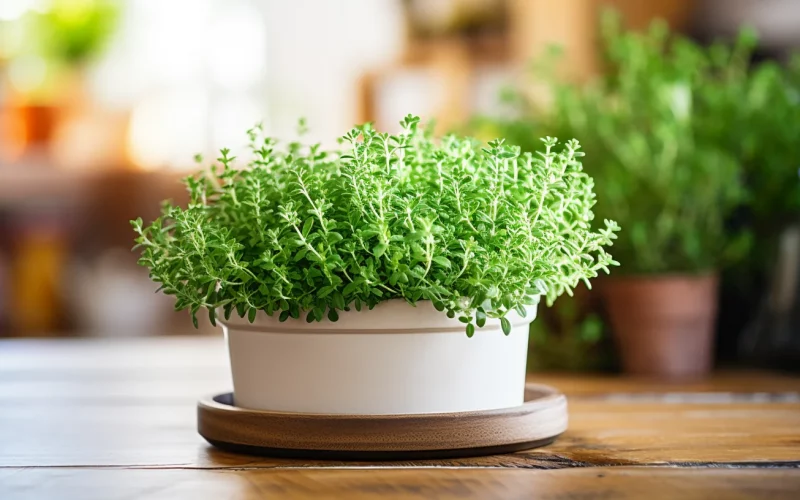Thyme is a versatile and aromatic herb, is a fantastic addition to any home garden. Growing thyme at home is quite straightforward, making it an excellent choice for beginners and experienced gardeners alike. Let’s explore how to grow and care for thyme, and conclude with some culinary inspiration.
Understanding Thyme: A Hardy Herb
Thyme is a perennial herb with tiny, fragrant leaves. It’s available in several varieties, each offering a distinct flavor and aroma. Common varieties include English thyme, lemon thyme, and French thyme.
Getting Started with Thyme
Here’s what you’ll need:
- Thyme seeds, cuttings, or starter plants
- Well-draining soil (for both pots and outdoor planting)
- A pot with drainage holes (for indoor planting) or a garden spot (outdoor planting)
- Watering can
Planting Thyme: The First Step
Thyme prefers full sun and well-drained soil. If you’re planting in a pot, ensure it has adequate drainage to avoid waterlogged soil. Plant the thyme seeds or cuttings, ensuring they’re adequately covered with soil.
Caring for Your Thyme Plant
Here are some tips to ensure your thyme plant thrives:
- Watering: Thyme doesn’t like to stay wet. Water when the soil is dry to the touch.
- Feeding: Feed your thyme plant with an organic, slow-release fertilizer at the beginning of the growing season.
- Pruning: Trim your thyme after it flowers to keep it compact and to promote new growth.
Harvesting Your Homegrown Thyme
You can start harvesting thyme as soon as the plant has enough foliage that taking a few won’t harm the plant. For a large harvest, cut back a third of the stems just after the plant flowers. This encourages a new flush of growth.
Using Your Fresh Thyme
Now that you have your homegrown thyme, here are some culinary ideas:
- Roasted Dishes: Thyme is a classic herb for roasted meats and vegetables. Try it with your next roast chicken or potatoes.
- Soups and Stews: Thyme adds a depth of flavor to soups and stews. Remember to add it early in the cooking process to allow its flavors to develop.
- Marinades and Dressings: Fresh thyme can liven up marinades and salad dressings. Try it in a lemon-thyme marinade for chicken or in a vinaigrette for your salad.






